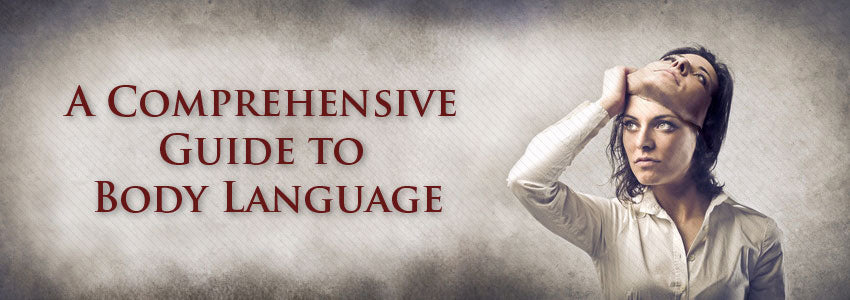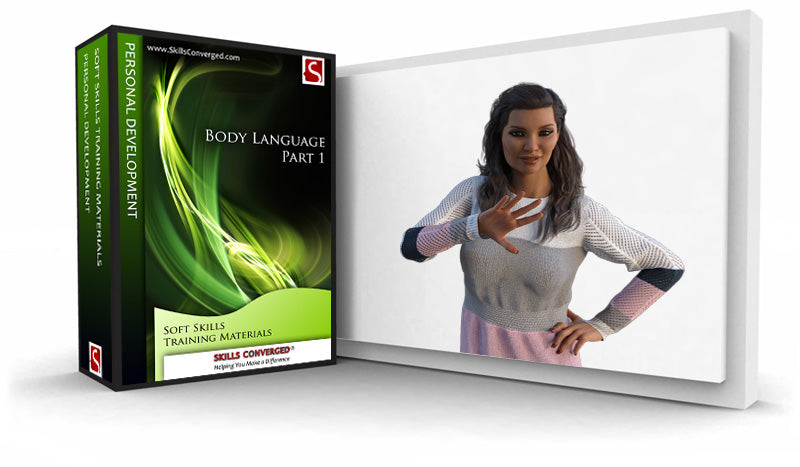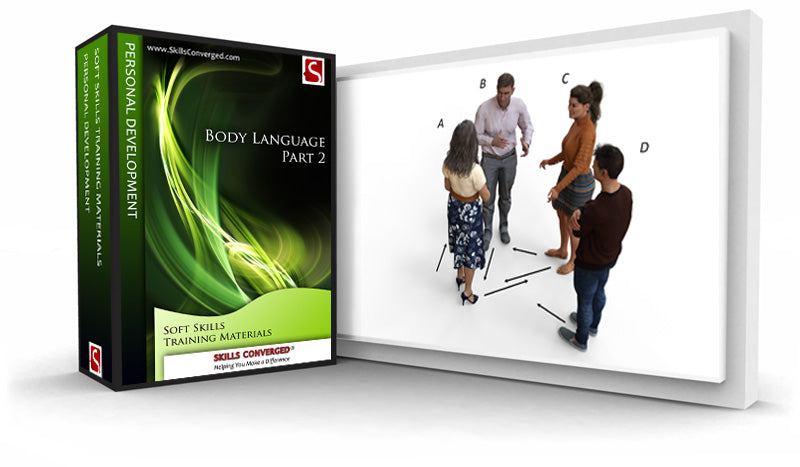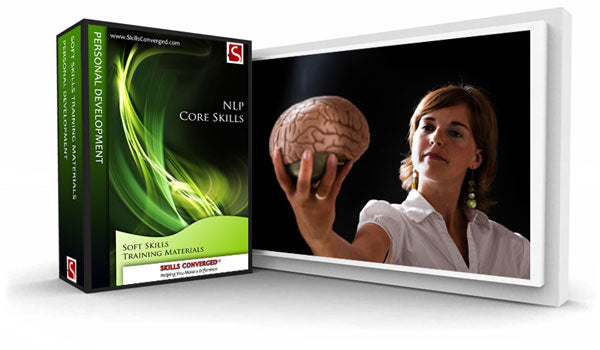
Beware of Body Language Myths
When body language is mentioned, most people show immediate interest whereas a select few have some reservations. Those who are skeptical about the effectiveness of this wonder if it can be that useful. Some even wonder if the field of body language is pseudoscience.
The negative view towards body language is often due to myths taught in communication skills or other training sessions. When studying this field it is important to be aware of such myths. The following is a list of popular myths and misconceptions :
Myth 1: Faking Body Language
Deception is part of human’s way of life and people seem to be always fascinated with any method that allows them to be deceptive when they need it. Whether this is morally right or wrong is a different issue. The question is whether it is possible to fake body language and is this useful.
There are two schools of thought on this topic. One school believes that faking non-verbal signals is not possible and it is a myth. Many of these signals and facial expressions are produced unconsciously. While you are experiencing a particular emotion, you are showing so many signals that it is impossible to fake all of them. The harder you try, the more unnatural your non-verbal signals and the easier it is for the other person to spot the anomaly and suspect something is wrong.
In contrast, another school of thought, and in particular fans of NLP (Neuro-Linguistic Programming), claim that by faking certain critical signals you can improve your chances of establishing rapport with others and making them feel more comfortable with you. Techniques such as mirroring and reading eye movement are particularly emphasised in NLP and some users claim that it does really work for them.
The truth is that, whatever school of thought you think is right, there is no harm in trying. The ultimate aim with body language, whether reading or faking it, is to improve the overall quality of the communication and allow you to get what you want. As selfish as this may sound, this is what everybody is after and there is no point in denying it. If you find that a particular technique works for you, go ahead and use it. If you can use a specific non-verbal signal or an effective eye-contact that gives you results every time, get the most from it. See body language of intentions for more details on NLP, eye accessing cues and spotting liars.
Some think that faking body language is inauthentic. This is a wrong way to think about the subject. Imagine when you are preparing to give a presentation. You need to decide about the message and how you want to communicate it. Communication, as you have seen, is carried out in two separate channels; verbal and non-verbal. Just as you prepare a script and decide what to say verbally, you also need to plan and practice what you say non-verbally. Preparing what you say verbally doesn’t make your presentation inauthentic and the same applies to giving the correct non-verbal signals at the right time. The problem lies in how you do it. If you say the wrong sentence you get bad results; just as if you show the wrong gestures and facial expressions at the wrong moment, you are likely to lose your audience. The answer lies in practicing the skill until you can deliver a convincing performance.
Myth 2: Using Body Language to Spot a Lie
Over the years there have been many claims that certain non-verbal signals are an indication that a person is lying. This trend intensified in 1970s, when the so called body language experts claimed that certain non-verbal signals were keys in uncovering deceitful individuals and thought that the techniques could even be used in criminal investigations. These gestures and non-verbal signals are now well-known. Here is a list of them:
- Touching the nose
- Covering the mouth
- Closing the eyes
- Talking with a high-pitched voice
- Pulling on the ear
- Scratching the neck
In 1985, a few researchers including Paul Ekman decided to scientifically analyse these claims and evaluate the myth. Their research found that the best most people could do in spotting deception was to randomly hit on target, i.e. there is only a 50/50 chance that you might get it right; effectively random.
The researchers found that these signals are not a direct indication that someone is lying; all they indicate is that someone is stressed. Being stressed doesn’t necessarily mean that the person is lying; it is only a signal among others.
This is particularly applicable in high-stakes situations such as being accused of a crime. The accused is usually quite stressed while going through the experience and whether guilty or not may exhibit signs that show the level of stress. These signs should not be taken as an indication that the person is certainly lying. The stress is sometimes so great that, as research shows, many innocent people readily confess to the crime they haven’t committed just to be done with the ordeal and move on.
Remember, detecting signals is only a starting point in spotting a lie and not an all-conclusive evidence. They can only be used as clues. To see what these non-verbal signals are see guidelines on body language of deception and lies.
Myth 3: Body Language is Specific to Culture
To examine this myth Paul Ekman carried out a pioneering research (Ekman 2003) where pictures of individuals with six fundamental emotions were shown to people of 21 cultures in the world. These emotions were happiness, fear, anger, sadness, surprise and disgust. The results showed that the majority of people from around the world recognised these emotions. Ekman even tried to find an isolated tribe who still lived with ancient traditions and tools to see if they could recognise these emotions. The experiment was carried out on the South Fore people of New Guinea, a tribe isolated from Western culture. Upon seeing the pictures, they recognised the emotions shown in the photographs with the exception that they could not distinguish between fear and surprise. He then asked them to express these emotions, took photographs and then showed them to Americans who could successfully state what the emotion was. In other words, these fundamental expressions are universal.

Universal body language: a smile is recognised everywhere as a smile.
However, not all signals are universal. Some of our behaviour and manners are developed as a result of cultural conditioning and hence people can express themselves with gestures that are different across cultures. Knowledge of these gestures is critical because otherwise you can make grave mistakes, potentially leading to discrimination, acting offensively or feeling offended when there is no cause for it.
Let’s consider an example. Avoiding eye contact is usually taken as a sign that someone is lying. However, consider that people from Latin America or African people are thought from childhood that they should not look an authority in the eye while being criticised. Now imagine what happens when a police officer of a western-world country criticises a person with such cultural background. The person who is being criticised is not going to look the “authority” in the eye, because this is what he has been thought and conditioned from childhood. In contrast, the police officer might take this lack of eye contact as a sign that the criticism is just.
For more cultural differences see the guidelines on body language across different cultures.
Myth 4: Putting Your Hands Behind Your Back Shows Power
For a long time, presentation coaches on body language seem to have been advising people that holding their hands behind them is a sign of power. It is similar to a Prince Charles posture though unfortunately adopting this posture doesn’t necessarily mean you would inherit the power.
Research shows that when confronted with this posture most people find it untrustworthy. Hence, putting hands behind you with an intention to show off your superiority is a myth. Generally, when hands are hidden from view, people become mistrustful of you because they cannot see what you are doing or holding. This is why showing the palm of your hands is a great way to establish rapport as you show you have nothing to hide.

Myth 5: Crossed Arms Always Mean the Person is Defensive
The simple answer is no. The statement in its absolute form is another popular myth. No single non-verbal signal should be read on its own, out of context and irrespective of the environment the person is in. Non-verbal signals should be read in a cluster and put in context. A person sitting in a chair with no arm rest in a cold room is more likely to cross his or her arm because of cold than being defensive. Similarly, all signals should be interpreted with reference to each other and also in conjunction with verbal signals. As you will see in the guidelines on reading body language: non-verbal communication provided on this site, rather than describing the meaning of an individual gesture, gestures are presented as a collection of signals for a particular emotion or behaviour. This way you can easily see what signals you need to look for to see what a person is thinking or feeling.
References
Ekman, P. (2003). Emotions Revealed. New York, NY: Owl Books.

All Articles in the Series
A Comprehensive Guide to Body Language
Origins of Humans and Body Language
How to Read People Using Their Body Language
How to Influence Your Emotional State Using Body Language
Body Language Across Different Cultures
Body Language of Defensive Attitude
Body Language of Good First Impressions
How to Improve Personal Impact
Continue Reading the Body Language Series..
Body Language Guide Article IndexBody Language Training Materials
Body Language Exercises
Explore our collection of free body language training exercises and articles:



Use this body language exercise at the beginning of a session before covering non-verbal communication. The aim is to find out how much delegates already know about this topic and...
The aim of this exercise is to get the delegates think about body language and gestures and observe how such signals can be instrumental while communicating. The training exercise illustrates...
This is an exercise in communication with the aim to increase awareness of body language and non-verbal communications.







